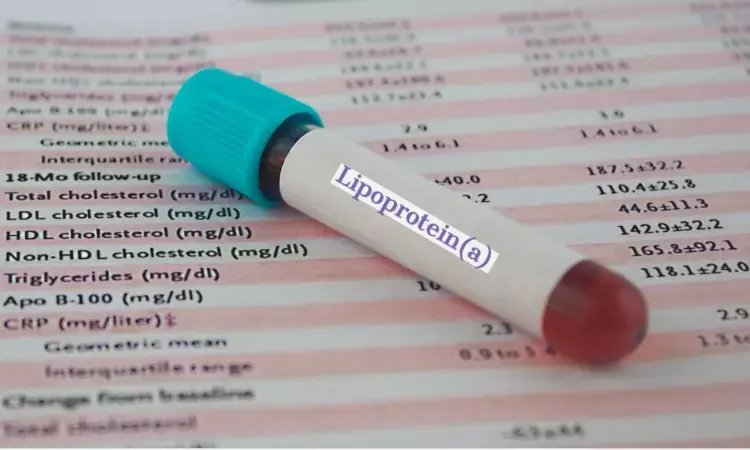- Home
- Medical news & Guidelines
- Anesthesiology
- Cardiology and CTVS
- Critical Care
- Dentistry
- Dermatology
- Diabetes and Endocrinology
- ENT
- Gastroenterology
- Medicine
- Nephrology
- Neurology
- Obstretics-Gynaecology
- Oncology
- Ophthalmology
- Orthopaedics
- Pediatrics-Neonatology
- Psychiatry
- Pulmonology
- Radiology
- Surgery
- Urology
- Laboratory Medicine
- Diet
- Nursing
- Paramedical
- Physiotherapy
- Health news
- Fact Check
- Bone Health Fact Check
- Brain Health Fact Check
- Cancer Related Fact Check
- Child Care Fact Check
- Dental and oral health fact check
- Diabetes and metabolic health fact check
- Diet and Nutrition Fact Check
- Eye and ENT Care Fact Check
- Fitness fact check
- Gut health fact check
- Heart health fact check
- Kidney health fact check
- Medical education fact check
- Men's health fact check
- Respiratory fact check
- Skin and hair care fact check
- Vaccine and Immunization fact check
- Women's health fact check
- AYUSH
- State News
- Andaman and Nicobar Islands
- Andhra Pradesh
- Arunachal Pradesh
- Assam
- Bihar
- Chandigarh
- Chattisgarh
- Dadra and Nagar Haveli
- Daman and Diu
- Delhi
- Goa
- Gujarat
- Haryana
- Himachal Pradesh
- Jammu & Kashmir
- Jharkhand
- Karnataka
- Kerala
- Ladakh
- Lakshadweep
- Madhya Pradesh
- Maharashtra
- Manipur
- Meghalaya
- Mizoram
- Nagaland
- Odisha
- Puducherry
- Punjab
- Rajasthan
- Sikkim
- Tamil Nadu
- Telangana
- Tripura
- Uttar Pradesh
- Uttrakhand
- West Bengal
- Medical Education
- Industry
Olpasiran effective therapeutic option for lowering lipoprotein(a) levels, suggests study

A new study published in the Journal of the American College of Cardiology found that strong siRNA that lowers lipoprotein(a) (Lp(a)) over an extended period of time is olpasiran. Nearly a year after the previous dosage, the individuals receiving doses over 75 mg Q12W saw a ∼40% to 50% drop in Lp(a) levels. Apolipoprotein(a) (apo(a)) is covalently bonded to apoB100 within a modified low-density lipoprotein (LDL) particle to form lipoprotein(a) (Lp(a)). A substantial amount of data points to Lp(a) as a causative factor in the processes that encourage calcific aortic valve disease and atherogenesis. Based on Mendelian randomization studies, a significant decrease in Lp(a) could be necessary in order to provide a significant therapeutic effect.
Olpasiran is a small interfering RNA (siRNA) molecule linked to N-acetylgalactosamine (GalNAc) that obstructs the expression of the LPA gene by causing the messenger RNA encoding apo(a) to break down, thereby stopping the hepatocyte from assembling the Lp(a) particle. Olpasiran is a small interfering RNA (siRNA) that inhibits the translation of apolipoprotein(a) mRNA, hence blocking the formation of lipoprotein(a) (Lp(a)). This research by Michelle O'Donoghue and colleagues evaluated both the longer-term safety and the timing of Lp(a) returning to baseline following olpasiran withdrawal.
In the phase 2 dose-finding trial OCEAN(a)-DOSE (Olpasiran Trials of Cardiovascular Events And LipoproteiN[a] Reduction–DOSE Finding Study), a total of 281 participants with atherosclerotic cardiovascular disease and Lp(a) >150 nmol/L were enrolled to receive one of four active doses of olpasiran versus placebo (10 mg, 75 mg, 225 mg Q12W, or an exploratory dose of 225 mg Q24W administered subcutaneously). Week 36 was the last dosage of olpasiran, and after week 48, there was a minimum 24-week prolonged off-treatment follow-up period.
276 individuals (98.2%) of the total study population started the post-treatment follow-up phase. The mean duration of the trial encompassed both treatment and non-treatment periods, was 86 weeks (Q1-Q3: 79-99 weeks). At 60, 72, 84, and 96 weeks, the off-treatment placebo-adjusted mean percent decrease from baseline in Lp(a) for the 75 mg Q12W dosage were −76.2%, −53.0%, −44.0%, and −27.9%, respectively (all P < 0.001).
For the 225 mg Q12W dosage, the corresponding off-treatment decreases in Lp(a) were −84.4%, −61.6%, −52.2%, and −36.4% (all P < 0.001). In the follow-up phase of the extension, no additional safety issues were found. Overall, the RNA interference of Olpasiran causes a significant decrease in Lp(a), with long-term pharmacodynamic effects that last for many months after therapy is stopped.
Source:
O’Donoghue, M. L., Rosenson, R. S., López, J. A. G., Lepor, N. E., Baum, S. J., Stout, E., Gaudet, D., Knusel, B., Kuder, J. F., Murphy, S. A., Wang, H., Wu, Y., Shah, T., Wang, J., Wilmanski, T., Sohn, W., Kassahun, H., & Sabatine, M. S. (2024). The Off-Treatment Effects of Olpasiran on Lipoprotein(a) Lowering. In Journal of the American College of Cardiology (Vol. 84, Issue 9, pp. 790–797). Elsevier BV. https://doi.org/10.1016/j.jacc.2024.05.058
Neuroscience Masters graduate
Jacinthlyn Sylvia, a Neuroscience Master's graduate from Chennai has worked extensively in deciphering the neurobiology of cognition and motor control in aging. She also has spread-out exposure to Neurosurgery from her Bachelor’s. She is currently involved in active Neuro-Oncology research. She is an upcoming neuroscientist with a fiery passion for writing. Her news cover at Medical Dialogues feature recent discoveries and updates from the healthcare and biomedical research fields. She can be reached at editorial@medicaldialogues.in
Dr Kamal Kant Kohli-MBBS, DTCD- a chest specialist with more than 30 years of practice and a flair for writing clinical articles, Dr Kamal Kant Kohli joined Medical Dialogues as a Chief Editor of Medical News. Besides writing articles, as an editor, he proofreads and verifies all the medical content published on Medical Dialogues including those coming from journals, studies,medical conferences,guidelines etc. Email: drkohli@medicaldialogues.in. Contact no. 011-43720751


